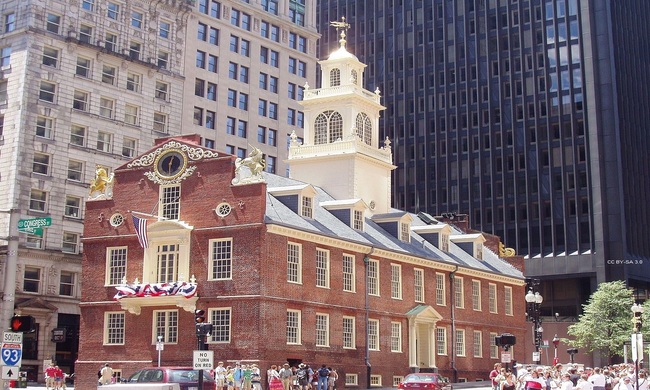This essay first appeared in the April 12, 2021 Epoch Times.
This is the fifth in a series of essays defending the U.S. Constitution against common accusations against it. This essay examines the claim that that the framers—the Constitution’s drafters—staged a coup d’état by proposing a new Constitution. As usually stated, the allegation is that:
“The Confederation Congress adopted a resolution calling a convention limited only to proposing amendments to the Articles of Confederation. But the convention disregarded limits on its authority and instead drafted an entirely new document. Moreover, the Articles could be amended only by approval of Congress and unanimous consent of the states. But the convention unilaterally changed the rule to allow ratification by nine states.”
This charge is very old: It first arose during the ratification debates of 1787–1790. Although modern scholars have debunked it (pdf), the Constitution’s critics continue to peddle it. In doing so, they—
- overlook critical events leading up to the convention;
- fail to read Congress’s resolution carefully;
- are unaware of the real source of the framers’ powers;
- are unaware that Congress actually approved the convention’s product; and
- overlook important historical sources.
Let’s review each of these.
Events Leading to the Convention
In 1787, the states were bound by a loose agreement called the Articles of Confederation. Under the Articles, the states delegated to the Confederation narrow responsibilities, mostly over defense and foreign affairs.
Although some refer to the Articles as “our first constitution,” this is a misnomer. During the founding-era, a “confederation” meant a treaty or alliance. The Articles were analogous to NATO and Congress was analogous to NATO’s administering body, the North Atlantic Council.
Like other treaties, the Articles left individual states free to address most issues themselves. Even when issues were common to several states, the states often did not present them to Congress. Instead, they entered bilateral negotiations or they negotiated multilaterally through “conventions of the states.”
A convention of states met in Annapolis in September 1786. It recommended to the state legislatures that they send commissioners (delegates) to a new convention in Philadelphia the following May with power to propose a stronger central authority.
The New Jersey legislature responded in November 1786 by appointing commissioners to the new convention. The legislature granted its commissioners extensive powers to discuss and propose any change in the political system they deemed appropriate for the benefit of the union.
The following month the Virginia legislature issued a formal convention “call” (invitation) to the other states. Virginia appointed commissioners and granted them powers similar to those the New Jersey legislature granted its commissioners:
“devising and discussing all such Alterations and farther Provisions as may be necessary to render the Foederal [sic] Constitution adequate to the Exigencies of the Union and in reporting such an Act for that purpose to the United States in Congress as when agreed to by them and duly confirmed by the several States will effectually provide for the same.”
Note that the phrase “Foederal constitution” means, in accordance with then-prevailing usage, the entire political system. It does not refer solely to the Articles of Confederation, as some critics assume.
The powers listed in the Virginia “call”—to propose any “Provisions as may be necessary” to render the political system “adequate”—became the basis on which five additional states agreed to participate in the weeks leading up to Feb. 21, 1787.
Congress’s Resolution Was Not the Convention Call
In February, a committee headed by John Dickinson of Delaware (who had chaired the Annapolis Convention) moved that Congress endorse the pending Philadelphia conclave. Dickinson believed a recommendation, although non-binding, would build public support.
The congressional proceedings make it clear everyone understood that unless something changed, the convention would be able to propose reform of the entire political system. But New York did not want that. New York congressional delegates moved that Congress recommend that the convention reduce its scope to proposing amendments to the Articles.
New York’s motion failed. But on Feb. 21, 1787, the Massachusetts congressional delegation obtained a compromise resolution. This resolution merely expressed Congress’s “opinion” that the convention focus on amendments to the Articles. As I wrote in a 2013 research study (pdf):
“[T]he successful resolution neither ‘called’ a convention nor made a recommendation. In fact, it omitted the language of recommendation in the committee proposal and in the New York motion. The adopted resolution merely asserted that ‘in the opinion of Congress it is expedient’ that a convention be ‘held at Philadelphia for the sole and express purpose of revising the Articles of Confederation’ ….
“It is, perhaps, truly extraordinary that so many writers have repeated the claim that Congress called the Constitutional Convention and legally limited its scope. First, the Confederation Congress had no power to issue a legally-binding call. If the states decided to convene, as a matter of law they—not Congress—fixed the scope of their delegates’ authority. Second, the Articles gave Congress no power to limit that scope. To be sure, Congress, like any agent, could recommend to its principals a course of action outside congressional authority. But this is not the same as legally restricting the scope of a convention. Third, by its specific wording the congressional resolution was not even a recommendatory call or restriction. As shown above, Congress dropped the formal term ‘recommend’ in favor of expressing ‘the opinion of Congress.’”
Congress could express its “opinion,” but within their own sphere the states could do what they deemed best. After Feb. 21, five additional states voted to send commissioners to Philadelphia—but only Massachusetts and New York limited them to amending the Articles. And none of the first seven states to commit narrowed the scope of their commissioners’ powers.
It was only later that critics re-fabricated Congress’s “opinion” into a claim that Congress had called the convention and limited its scope.
The Framers’ Real Source of Authority
Eighteenth-century law and convention practice tell us that the convention’s authority was defined by the broad commissions or credentials issued by a majority of states. Other documents, including a letter written in early 1787 by John Jay to George Washington, confirm this.
Critics point out that some commissioners, particularly those from Massachusetts and New York, questioned the source and extent of their authority. But the majority’s credentials were clear. They even adopted a resolution that, as South Carolina’s Charles C. Pinckney noted, effectively “declar[ed] that the convention does not act under the authority of the recommendation of Congress.”
Hugh H. Brackenridge, a distinguished Pennsylvania lawyer (and later a justice of the state supreme court) summarized the legal situation shortly after the Convention adjourned:
“[T]he calling the late convention did not originate with Congress; it began with the state of Virginia which was followed by this state, without any hint of the necessity of this measure from Congress whatever; it was a proceeding altogether out of the confederation, and with which Congress had nothing to do.”
Approval by Congress and Ratification by All States
Critics complain that Congress did not pass a formal resolution of approval. But that was not the framers’ fault: They sent the Constitution to Congress for approval, but Congress doubted its power to formally endorse it. Congress did vote unanimously to send the document to the states for ratification, and this action was understood to constitute informal approval.
What of the claim that the Articles of Confederation required all 13 states to approve any amendment? One response is that all 13 states did, in fact, eventually ratify the Constitution. But a more fundamental response is that the Constitution was not an amendment to the Articles. It was a decision by signatories to a treaty to replace that treaty with a new arrangement. Treaty signatories always have this power. That was doubly so in this instance, because several states had breached the terms of the Articles by, for example, failing to pay required financial assessments. Breach of a treaty by one party releases other parties from their obligations.
Relying on Too Few Sources
The charge that the framers staged a coup is, like many other slanders against the Constitution, based on misreading a small handful of sources. Some people seem to think they are constitutional “experts” because they have scanned James Madison’s convention notes and the Federalist Papers. But those sources comprise only a tiny fraction of the historical record.
For example, some of the Constitution’s enemies seem to think Madison’s tepid defense of convention authority in Federalist No. 40 was all that was said on the subject. But the delegates’ commissions show that Madison understated his case, probably because he did not have copies of the commissions when he wrote No. 40. (He, after all, was far from home at the time.) In my experience, most of the Constitution’s enemies would rather attack than seek the truth.
In sum: The claim that the Constitution was a “coup” is a slander against the framers. The vast majority of convention delegates had full authority to act as they did. And of the small minority who did not, most did not sign the Constitution.









